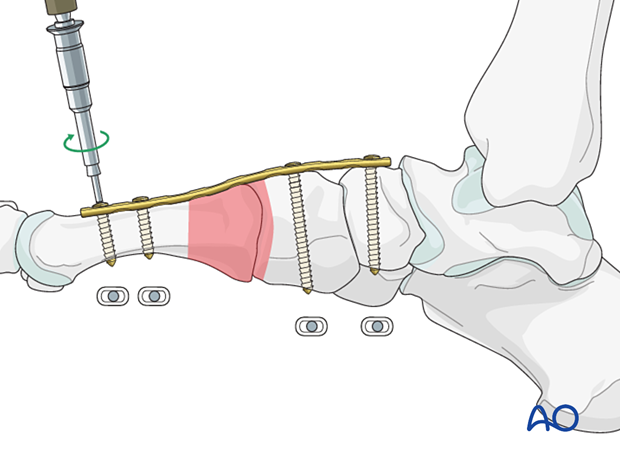Dorsal spanning plate fixation of the tarsometatarsal joint
1. General considerations
Plating principles
The plating technique can be used for definitive or temporary stabilization of the midfoot with damage control surgery. In this case, dorsal spanning plates are used to provisionally stabilize the foot’s medial and/or lateral columns.
Once the soft tissue envelope improves, the dorsal spanning plate can be removed, and definitive fixation is performed.
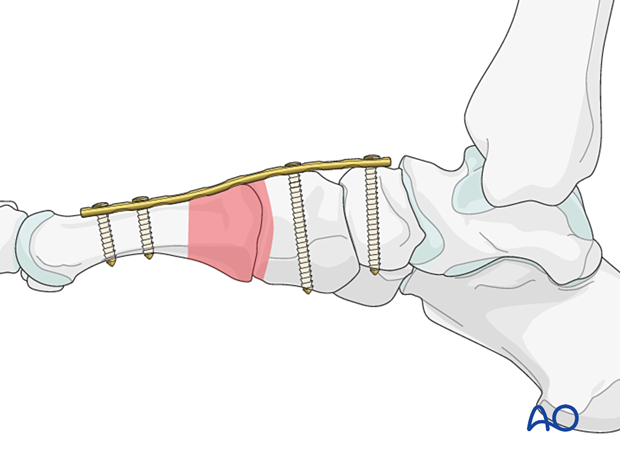
The plating technique can also protect reconstructions of the Lisfranc or Chopart joint.
When protecting a Chopart fracture, the plate goes from the talus to the metatarsals.
The plate is removed after the reconstruction has healed.
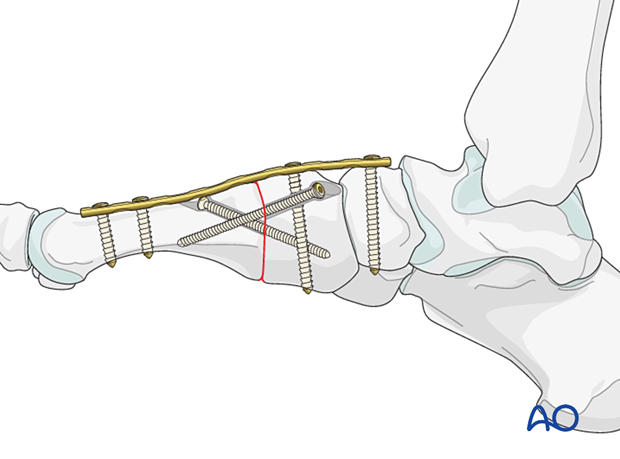
2. Patient preparation
This procedure is typically performed with the patient placed supine with the knee flexed at 90°.
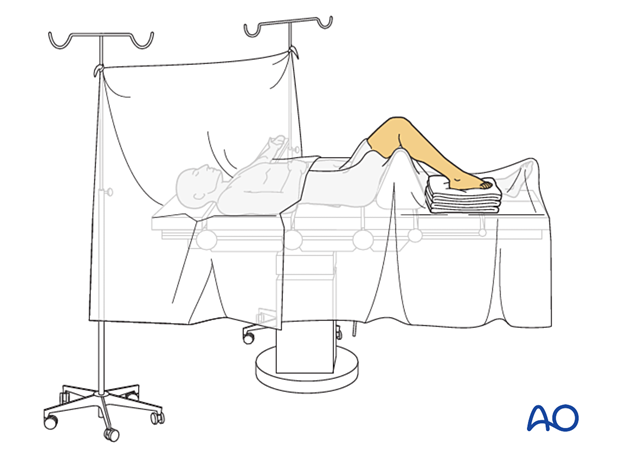
3. Plate selection
The plate should be long enough to allow two screws to be inserted into each side of the injured column.
The distal screw insertion points include the distal metatarsals.
The proximal screw insertion points include the:
- Navicular
- Cuneiform
- Cuboid
- Calcaneum
A 3.5 mm plate(s) should be used for all metatarsals. However, 2.7 plates can be used in the lesser metatarsals depending on the patient's anatomy.
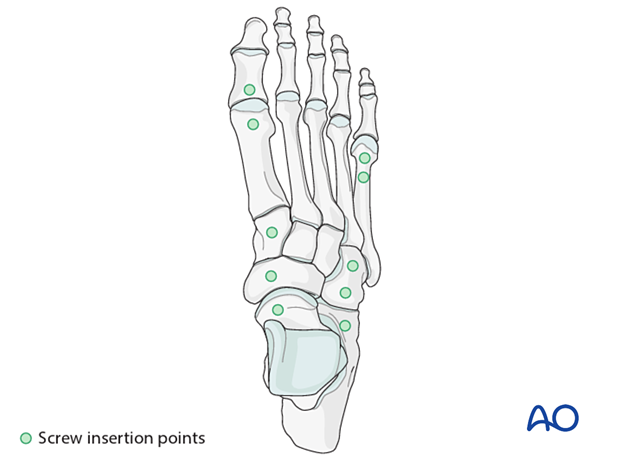
4. Reduction (in case of damage control)
Manual traction
Manual traction on the toe or manual reduction of the Chopart or Lisfranc fracture/fracture-dislocation, as illustrated, will usually regain the correct length, rotation, and alignment of the distal metatarsal segment.
Most Lisfranc or Chopart injuries will displace dorsally and require a manual force to reduce them.

External fixation
Medial or lateral column external fixation may be used to assist in restoring the anatomy before plate fixation.
The external fixator may be left in place in some instances until definitive reconstruction is performed.
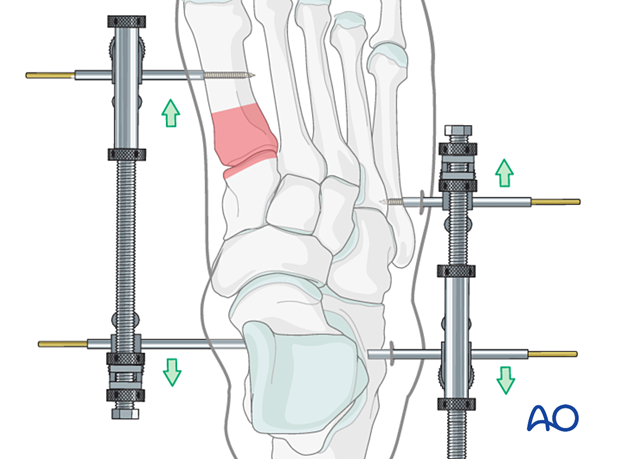
5. Plate application
An appropriately contoured plate is placed dorsally to span the injured region.
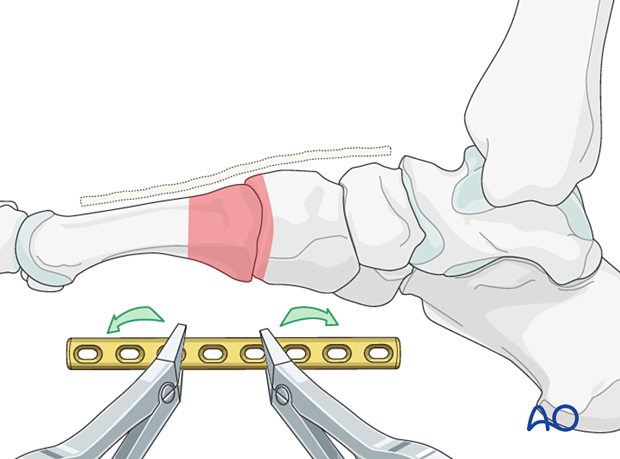
The plate is fixed by inserting screws in neutral mode, with the fracture reduced and out to length.
